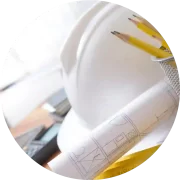Bridge Construction – Comprehensive Civil Engineering Services by Sydney Contracting Engineers (SCE CIVIL)
At SCE CIVIL, we are your trusted partner for comprehensive civil engineering services in Australia, with a focus on bridge construction. Our commitment to quality, safety, and innovation drives us to deliver exceptional solutions for a wide range of civil projects, emphasising the construction of bridges. Through meticulous attention to detail, adherence to industry standards, and integration of advanced materials, we create enduring and resilient bridge structures. Our dedication to safety ensures the well-being of workers, the environment, and future users, while our pursuit of innovation allows us to utilise emerging technologies and sustainable practices, shaping the landscape of modern bridge engineering.
Services We Offer

Expertise Across Multiple Areas:
Our highly skilled team of civil engineers specialises in a diverse range of fields, including road construction, bridge design, land development, stormwater management, and more. We stay at the forefront of industry advancements, incorporating cutting-edge technologies into our projects.

Tailored Solutions:
Recognising the uniqueness of each project, we emphasise customised solutions. Our experts collaborate closely with clients to analyse specific requirements and deliver designs and construction plans tailored to meet their distinct needs and objectives.

Safety First:
Safety is paramount in our operations. From planning to execution, we adhere to stringent safety protocols, ensuring a secure work environment for our team and stakeholders. Our commitment extends to comprehensive traffic management, site access control, and ongoing risk assessments.

We hold environmental responsibility in high regard. Our sustainable practices aim to minimise environmental impact while optimising project efficiency. We integrate eco-friendly designs and employ recycled materials whenever feasible.

Quality Assurance:
Delivering excellence is our commitment. Our quality assurance processes encompass thorough inspections, regular audits, and strict compliance with industry standards. This meticulous approach guarantees that every project not only meets but surpasses client expectations.

Collaborative Approach:
Collaboration and open communication define our philosophy. By working closely with clients, contractors, and stakeholders, we foster a transparent process that ensures everyone is informed throughout the lifecycle of the project.

Local Community Engagement:
As a socially responsible firm, we prioritise local community engagement. We source materials and labor from local suppliers, supporting the economy and promoting sustainable growth.

Certified and Accredited:
SCE CIVIL is accredited by recognised industry bodies, demonstrating our commitment to excellence and adherence to industry best practices.

Project Portfolio:
Our portfolio boasts successful ventures in infrastructure development, urban planning, water resources management, and more. We take pride in our track record of delivering projects on time and within budget.
Why Choose Sydney Contracting Engineers - Bridge Construction ?
Partner with Sydney Contracting Engineers (SCE CIVIL) for your civil engineering needs. Whether it’s a large-scale road construction or stormwater management project, we are ready to provide reliable and innovative solutions. Get in touch today to discuss your project requirements and let us bring your vision to life.

Engineering Excellence – Bridge Construction:
Sydney Contracting Engineers boasts a team of qualified and experienced structural engineers, ensuring innovative design solutions that prioritise optimal structural integrity for each bridge construction project.

Proactive Regulatory Compliance – Bridge Construction:
Efficient and proactive, SCE navigates the regulatory landscape with precision, securing necessary approvals promptly and demonstrating an unwavering commitment to compliance with industry standards and regulations.

Mastery in Construction Fundamentals – Bridge Construction:
SCE’s meticulous approach to site preparation establishes a robust foundation, while their expertise in foundation engineering and substructure construction showcases a mastery of fundamental engineering principles.

Craftsmanship and Quality – Bridge Construction:
The construction process at SCE is characterised by precision in superstructure construction and deck installation, with meticulous attention to finishing touches that enhance the overall durability and quality of the constructed bridges.

Rigorous Structural Integrity Testing – Bridge Construction:
SCE prioritises safety through comprehensive structural integrity testing, including thorough load testing, to ensure each bridge not only meets but exceeds industry safety standards.

Transparent Project Management – Bridge Construction:
SCE maintains transparency in project management through meticulous documentation practices, providing clients with clear insights into project milestones and ensuring regular communication and collaboration.
In conclusion, choosing Sydney Contracting Engineers (SCE) for your bridge construction projects ensures a partnership marked by engineering excellence, regulatory prowess, and a commitment to quality that extends from the foundational stages to the finishing touches. SCE’s mastery of construction fundamentals, rigorous testing processes, and transparent project management practices make them a reliable and trustworthy partner. With a proactive approach to compliance, community engagement, and maintenance planning, SCE not only constructs bridges that stand the test of time but also fosters lasting relationships with clients and communities. Trust SCE for a bridge construction experience that blends innovation, precision, and enduring commitment to excellence.Top of Form
Sydney Contracting Engineers: Methodologies for Exceptional Bridge Construction:
Sydney Contracting Engineers commences each project with a meticulous site analysis, evaluating geological and environmental conditions. The team assesses project feasibility, considering traffic patterns, environmental impact, and budget constraints to ensure a comprehensive understanding of the venture.
- Collaborative Design Phase: SCE collaborates with a team of qualified structural engineers to design the bridge in adherence to project requirements and site conditions. The emphasis is on load-bearing capacity, material selection, and maintaining optimal structural integrity throughout the design process.
- Regulatory Approvals and Compliance: SCE proactively secures all required permits and approvals from local authorities and regulatory bodies, demonstrating a commitment to compliance before initiating construction.
- Site Preparation and Alignment: SCE undertakes meticulous site preparation, clearing obstacles and vegetation. The team precisely grades the site to establish a strong foundation and alignment for the bridge construction.
- Foundation Engineering Excellence: Employing engineering excellence, SCE excavates foundation pits and constructs deep foundations, employing techniques such as piles or caissons based on thorough soil testing and analysis.
- Substructure Construction Mastery: SCE brings mastery to substructure construction, expertly building abutments and piers according to approved designs. Rigorous attention is given to reinforcement and formwork for concrete elements.
- Superstructure Construction Precision: SCE ensures precision in superstructure construction, seamlessly assembling and installing precast concrete segments or structural steel components for the bridge deck.
- Deck Installation Craftsmanship: Craftsmanship is evident as SCE places bridge deck components, whether precast or cast in place, incorporating expansion joints to accommodate temperature variations seamlessly.
- Structural Integrity Testing Assurance: SCE places a premium on structural integrity testing, conducting comprehensive tests, including load testing, to ensure the bridge meets and exceeds safety standards.
- Finishing Touches and Durability Enhancement: SCE enhances the durability of the bridge by applying protective coatings and installing safety features, such as guardrails and lighting, ensuring a finished product of the highest quality.
- Quality Control and Assurance Excellence: Maintaining a commitment to excellence, SCE implements a rigorous quality control program, monitoring construction processes and materials. Regular inspections guarantee workmanship adheres to the highest standards and design specifications.
- Documentation and Handover Expertise: SCE maintains meticulous records throughout the construction process, including inspections and tests. A comprehensive project documentation package is compiled, and a final inspection is conducted before officially handing over the completed bridge.
- Maintenance Planning for Longevity: SCE develops a proactive maintenance plan, outlining regular inspections and necessary repairs, ensuring the long-term durability and safety of the bridge for the community it serves.
- Community Engagement and Stakeholder Communication: SCE prioritises community engagement throughout the project, addressing concerns and keeping stakeholders informed, exemplifying transparency and responsible project management.
Sydney Contracting Engineers (SCE) begins each bridge construction project with meticulous site analysis, ensuring a comprehensive understanding of geological and environmental factors. Collaborating with qualified structural engineers, SCE designs the bridge with a focus on load-bearing capacity and structural integrity. The company proactively secures regulatory approvals, emphasising compliance. Through precise site preparation and mastery of foundation and substructure construction, SCE establishes a robust foundation. The team demonstrates craftsmanship in superstructure construction, deck installation, and finishing touches, enhancing bridge durability. SCE conducts thorough structural integrity testing and maintains excellence in quality control, documented through comprehensive records. Upon project completion, SCE’s commitment to maintenance planning ensures long-term bridge longevity. Throughout the process, community engagement and stakeholder communication underscore SCE’s dedication to transparency and responsible project management.
FAQ Bridge Construction
1. What are the main stages of bridge construction?
The construction of a bridge involves several key stages that ensure its safety and integrity. It begins with planning and design, where site assessments and environmental studies are conducted to determine the bridge type. Next, site preparation takes place, including clearing the area and performing soil surveys. The foundation work is critical, as it establishes the base that supports the bridge. This is followed by substructure construction, which involves building piers, columns, and abutments. The superstructure construction stage sees the assembly of the main bridge deck and structural components, either through prefabricated sections or on-site methods. Afterward, decking and finishing tasks are completed, adding railings and drainage systems. During the utilities installation, necessary elements like lighting and signage are incorporated. Throughout the bridge construction process, quality control and inspection are conducted to ensure adherence to safety standards. Finally, a final inspection occurs before the bridge is opened to traffic, and a maintenance plan is established to ensure its longevity.
2. How is the site for a bridge selected?
Selecting a site for a bridge construction involves a thorough evaluation of various factors to ensure safe and effective construction. Key considerations include assessing geographical and geological conditions, ensuring stable soil and bedrock to support the bridge. Hydrology plays a vital role, as engineers analyse water flow and flood risks to avoid prone areas. Accessibility is crucial for both construction equipment and future maintenance, necessitating proximity to existing roads. Environmental impact assessments help minimise disruption to local ecosystems and habitats. Land use and zoning regulations must align with the intended bridge location, while community input provides valuable insights. Cost considerations, including construction expenses and maintenance, are also important. Additionally, the specific design requirements of the bridge dictate site characteristics such as span length and clearances. Finally, safety and security concerns, including proximity to other infrastructure, are carefully evaluated.
3. What types of bridges are commonly constructed?
Common types of bridges constructed include several distinct designs, each serving specific purposes in bridge construction. Beam bridges are simple and cost-effective, supported at both ends, making them ideal for short spans. Arch bridges, with their curved structures, efficiently distribute weight and can span longer distances, often constructed from stone, concrete, or steel. Truss bridges utilise a triangular framework for load distribution, offering strength and versatility. Suspension bridges are known for their iconic designs, using cables suspended between tall towers to support the deck, perfect for long spans. Cable-stayed bridges also employ cables but attach them directly to towers for a sturdy appearance. Concrete bridges can take various forms and provide durability with low maintenance, while steel bridges are flexible and strong, accommodating heavy loads. Cantilever bridges span distances using cantilevers, and movable bridges allow for boat traffic, including drawbridges and lift bridges. Each bridge type is selected based on factors like span length, load requirements, and site conditions, highlighting the importance of thoughtful design in bridge construction.
4. What factors influence the choice of materials in bridge construction?
Several key factors influence the choice of materials in bridge construction, ensuring the bridge meets its intended purpose and longevity. First, the load requirements dictate the necessary strength and type of material, as different loads demand different properties. The span length is also critical; materials like steel are often favoured for long spans due to their high strength-to-weight ratio. Additionally, environmental conditions such as climate and exposure to chemicals impact material durability. Construction methods play a role as well, with certain techniques favouring specific materials like precast concrete. Cost is a major consideration; budget constraints can limit material options. The maintenance needs of the materials selected also affect long-term costs and efforts, as some materials require more upkeep than others. Aesthetic considerations may influence material choice to enhance the bridge’s visual appeal, while sustainability increasingly guides the selection towards eco-friendly options. Compliance with regulatory standards and the availability of materials in the local area further shape these decisions. By carefully evaluating these factors, engineers can select the most suitable materials for effective and durable bridge construction.
5. How is the safety of a bridge ensured during construction?
Ensuring the safety of a bridge during construction involves a comprehensive approach that includes several critical strategies. First, a thorough site assessment identifies potential hazards related to the bridge’s location. Engineers incorporate safety features into the design to address load capacity and materials used. Detailed construction planning outlines safety protocols, while workers undergo training and certification to understand best practices and emergency procedures. The use of personal protective equipment (PPE) is mandatory to protect construction personnel. Regular inspections of equipment and the construction site help identify hazards early, and monitoring weather conditions allows for adjustments to avoid unsafe working conditions. Effective traffic management is essential if construction impacts existing traffic, ensuring the safety of both workers and the public. Clear communication among team members is crucial for addressing safety concerns promptly, and having an emergency preparedness plan ensures readiness for any incidents. By implementing these safety measures, the construction of the bridge can proceed effectively while protecting all involved.
6. What are the environmental considerations in bridge construction?
Environmental considerations in bridge construction are essential for minimising ecological impacts and promoting sustainability. Key factors include careful site selection to avoid disrupting sensitive ecosystems and protected areas. Conducting environmental impact assessments (EIAs) helps evaluate potential effects on air, water, soil, and biodiversity, guiding design and construction to mitigate harm. Protecting water quality during construction is crucial, necessitating measures to prevent sedimentation and pollution of nearby water bodies. Habitat preservation strategies aim to protect local wildlife, often by timing construction to avoid critical breeding seasons. Additionally, selecting sustainable materials reduces the environmental footprint of the bridge. Effective waste management plans ensure proper disposal or recycling of construction debris, while erosion control measures help maintain soil stability. Ongoing monitoring during construction ensures compliance with environmental regulations, and engaging local communities fosters transparency and goodwill. Finally, post-construction restoration efforts, such as replanting native vegetation, help rehabilitate disturbed areas. By prioritising these environmental considerations, bridge construction can effectively minimise ecological impact and protect natural resources.
7. How do engineers assess the load capacity of a bridge?
Engineers assess the load capacity of a bridge through a systematic approach that combines design analysis, load evaluation, and testing. They begin with the bridge’s design specifications, considering materials and dimensions essential for determining load capacity. Various loads are analysed, including dead loads from the bridge structure and live loads from vehicles and environmental factors. Understanding the material properties of components like concrete and steel is crucial for evaluating strength. Engineers conduct structural analysis using techniques such as finite element analysis (FEA) to predict load distribution and bridge response. In some cases, load testing is performed, applying controlled weights to the bridge to validate theoretical models. Safety factors are applied to accommodate uncertainties, ensuring a margin of safety in the bridge’s construction. For existing bridges, inspection and maintenance records are reviewed to identify any wear or damage affecting load capacity. Lastly, compliance with local and national standards guarantees that the bridge meets safety regulations. By integrating these strategies, engineers effectively determine the load capacity of a bridge, ensuring its safety and functionality in construction.
8. What are the advantages of using steel in bridge construction?
Using steel in bridge construction offers numerous advantages that enhance the overall effectiveness and longevity of the structure. Steel boasts a high strength-to-weight ratio, allowing for longer spans and more efficient bridge designs. Its durability enables it to withstand harsh weather conditions, while the flexibility of steel allows for a variety of shapes and innovative architectural features. Rapid construction is another benefit, as steel components can be prefabricated off-site, reducing on-site assembly time and minimising disruption. Although the initial costs may be higher, steel’s low maintenance requirements can lead to long-term savings. Additionally, steel is highly sustainable due to its recyclability, which reduces environmental impact. Its resilience against natural disasters, such as earthquakes, enhances the safety of the bridge. Furthermore, steel’s aesthetic appeal supports modern design choices, making it an attractive option for engineers and architects in bridge construction. Overall, the combination of strength, durability, and design versatility makes steel a preferred material in bridge construction projects.
9. How does the design of a steel bridge differ from that of a concrete bridge?
The design of a steel bridge significantly differs from that of a concrete bridge in several key areas. Steel bridges leverage the material’s strength and flexibility, allowing for longer spans and lighter structures, often employing truss or arch designs for efficient load distribution. In contrast, concrete bridges typically utilise solid slabs or cantilever designs, which can be bulkier due to concrete’s compression strength but lower tensile strength. The construction techniques also vary, with steel components often prefabricated off-site for quicker assembly, while concrete requires in-situ pouring, making it more time-consuming and dependent on weather conditions. Additionally, steel bridges are generally lighter, leading to reduced foundation needs, while concrete bridges impose heavier loads on supports. Maintenance differs as well; steel requires regular upkeep to prevent rust, while concrete is more resistant but can suffer from cracking. Aesthetically, steel allows for modern, sleek designs, whereas concrete may appear bulkier. Ultimately, the choice between steel and concrete in bridge construction depends on factors such as span length, load requirements, and environmental considerations, with each material presenting distinct advantages in the construction process.
10. What maintenance is required for steel bridges?
Maintenance of steel bridges is crucial for ensuring their longevity and safety. Regular inspections are essential to detect signs of wear, corrosion, or damage in the bridge’s structure and connections. Since steel is prone to rust, applying and reapplying protective coatings like paint or galvanisation is vital for corrosion prevention. Keeping the bridge clean by removing debris and salt is also important to avoid corrosion and maintain visibility during inspections. Maintenance of expansion joints is critical for accommodating movement without causing structural stress. Any structural repairs needed, such as welding or replacing damaged components, should be addressed promptly. The bridge deck requires regular inspection and repair to ensure safety for vehicles and pedestrians. Implementing load monitoring systems helps track the bridge’s performance over time. Additionally, maintaining detailed documentation of all inspections, maintenance activities, and repairs is essential for effective bridge management. By adhering to these maintenance practices, the structural integrity of steel bridges in construction can be preserved, ensuring their safety and functionality for years to come.
11. How are steel bridges fabricated and assembled?
The fabrication and assembly of steel bridges involve a systematic process designed for precision and efficiency. It begins with detailed design and engineering, where load capacity and structural integrity are calculated. High-quality steel is then selected, followed by cutting and shaping the material into necessary forms using techniques like plasma cutting. Welding is employed to join components, ensuring strong connections. Once fabricated, the steel undergoes surface treatment to prevent corrosion, which is followed by rigorous quality control measures to ensure compliance with design specifications. After transportation to the construction site, steel bridge components are assembled using cranes, with precise alignment of beams and trusses. Final connections, often through bolting or welding, secure the structure, and the completed bridge is subjected to thorough inspections and load testing. This meticulous approach to steel bridge construction ensures safety, durability, and functionality for years to come.
12. What are the typical lifespan and durability of steel bridges?
The typical lifespan of steel bridges ranges from 50 to 100 years, heavily influenced by several factors that affect their durability. High-quality steel and protective coatings, such as paint or galvanisation, play a crucial role in preventing corrosion, which is a significant threat to steel bridges. Environmental conditions, like exposure to saltwater or extreme temperatures, can accelerate deterioration. Additionally, well-designed bridges that consider load requirements and traffic patterns tend to last longer. Regular maintenance practices, including inspections and repairs, are essential for extending the lifespan of a steel bridge. Traffic loads, particularly from heavy vehicles, can increase wear and tear, while the quality of construction and adherence to safety standards further impact durability. By focusing on these factors, the construction of steel bridges can yield highly durable structures that serve effectively for decades.
13. What are the benefits of concrete in bridge construction?
Concrete offers numerous advantages in bridge construction that enhance strength and longevity. Its high compressive strength makes it ideal for supporting heavy loads, contributing to the reliability of the bridge structure. Concrete is also highly durable, able to withstand harsh environmental conditions such as moisture, chemicals, and extreme temperatures, which helps extend the bridge’s lifespan. Additionally, concrete bridges typically require less maintenance, reducing long-term costs associated with upkeep. The versatility of concrete allows for creative and innovative designs, accommodating various shapes and styles in bridge construction. Furthermore, concrete’s fire resistance and sound-absorbing properties improve safety and reduce noise levels around the bridge. While initial costs may vary, the durability and low maintenance needs often lead to overall cost-effectiveness. The well-established technology for concrete construction ensures reliable methods for building bridges. Overall, the benefits of concrete in bridge construction make it a preferred choice for engineers and architects, providing a strong, durable, and versatile solution for a wide range of bridge construction projects.
14. How does the curing process affect concrete bridge construction?
The curing process plays a crucial role in concrete bridge construction, significantly influencing the strength, durability, and overall quality of the concrete. Proper curing ensures that moisture is retained, allowing the concrete to achieve its intended compressive strength and enhancing long-term durability against environmental factors like freeze-thaw cycles and chemical exposure. Additionally, effective curing minimises the risk of cracking during the setting phase, leading to a smoother surface finish that is important for both aesthetics and safety. Well-cured concrete is also more resistant to erosion and damage, making it essential for bridges exposed to harsh conditions. Furthermore, timely curing can positively impact the overall construction schedule, allowing for quicker use of the bridge. By investing in proper curing techniques, the construction process not only enhances the bridge’s performance but also leads to cost savings over its lifespan by reducing the likelihood of future repairs and maintenance. Overall, the curing process is vital for ensuring the integrity and longevity of concrete bridges in construction.
15. How is the structural integrity of a concrete bridge ensured?
Ensuring the structural integrity of a concrete bridge is a multifaceted process that begins with thorough design and engineering, where calculations account for loads, environmental factors, and safety standards. The use of high-quality materials, including durable concrete and robust reinforcement like steel rebar, is crucial for achieving the desired strength. Proper curing is essential for hydration, which prevents cracking and enhances durability. Regular inspections during and after construction help identify any issues early, while ongoing maintenance practices, such as cleaning and repairing cracks, are vital for preserving the bridge’s condition. Additionally, managing traffic loads and designing the bridge to withstand environmental factors, such as seismic activity and temperature changes, further contribute to its structural integrity. Employing modern technology, such as sensors for real-time monitoring, provides valuable data that can prompt timely interventions. By incorporating these strategies, the construction and maintenance of concrete bridges can effectively ensure their safety and longevity, making them reliable infrastructures for years to come.
16. What maintenance practices are essential for concrete bridges?
Ensuring the structural integrity of a concrete bridge is a multifaceted process that begins with thorough design and engineering, where calculations account for loads, environmental factors, and safety standards. The use of high-quality materials, including durable concrete and robust reinforcement like steel rebar, is crucial for achieving the desired strength. Proper curing is essential for hydration, which prevents cracking and enhances durability. Regular inspections during and after construction help identify any issues early, while ongoing maintenance practices, such as cleaning and repairing cracks, are vital for preserving the bridge’s condition. Additionally, managing traffic loads and designing the bridge to withstand environmental factors, such as seismic activity and temperature changes, further contribute to its structural integrity. Employing modern technology, such as sensors for real-time monitoring, provides valuable data that can prompt timely interventions. By incorporating these strategies, the construction and maintenance of concrete bridges can effectively ensure their safety and longevity, making them reliable infrastructures for years to come.
Thank you for your visit, and welcome to the construction home
